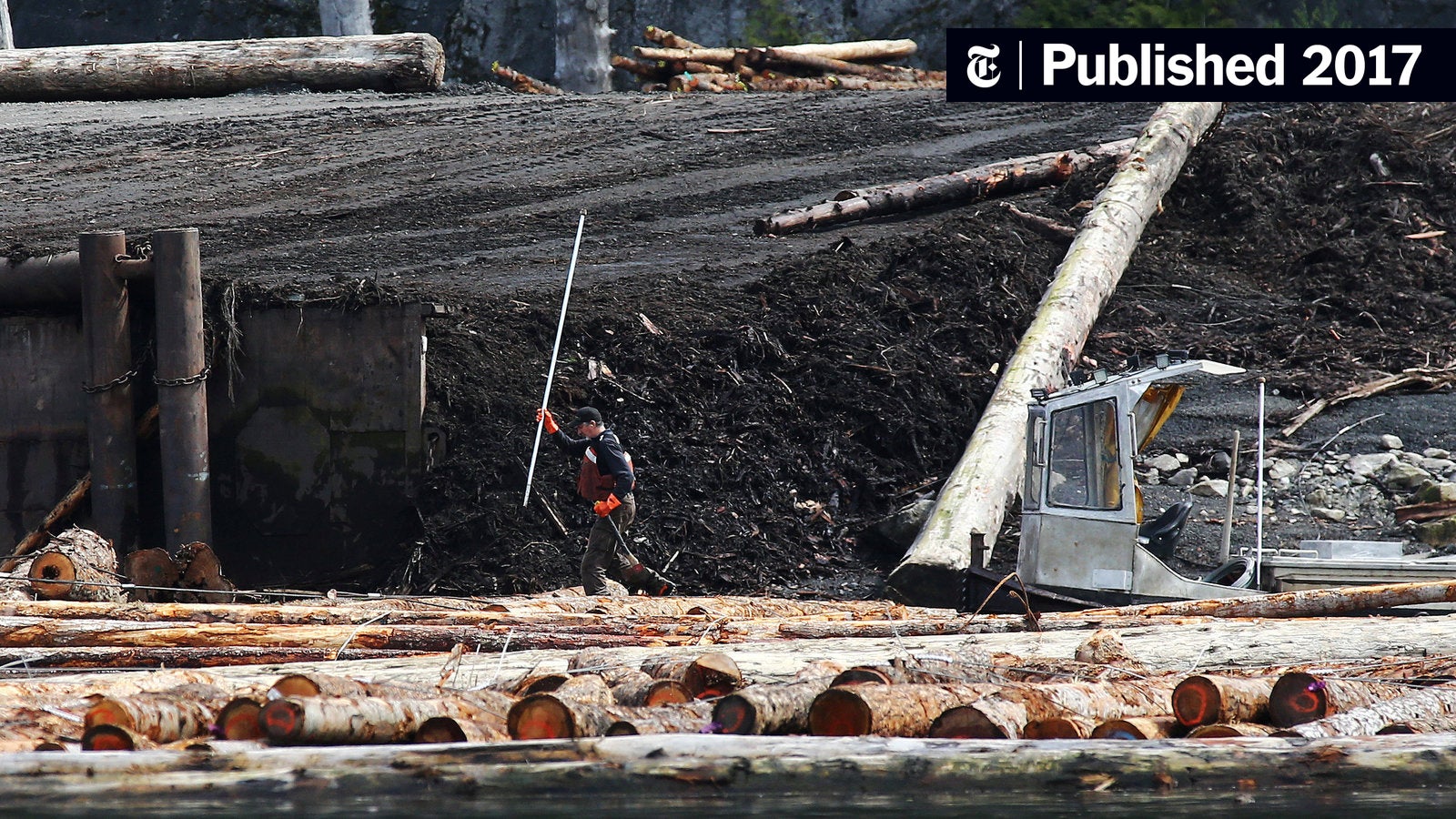Is British Columbia's LNG Development Stalling? Examining Five Key Projects

Table of Contents
Project 1: LNG Canada – A Case Study in Delays
LNG Canada, a joint venture located in Kitimat, initially aimed to commence operations in 2025. However, this ambitious timeline has faced significant delays. This large-scale LNG export terminal project epitomizes the challenges inherent in British Columbia LNG development.
-
Key Reasons for Delays:
- Regulatory Hurdles and Permitting Challenges: Navigating the complex regulatory landscape and obtaining necessary permits from various levels of government proved time-consuming.
- Financing Difficulties and Securing Investment: Securing the substantial financial investment required for such a massive undertaking took longer than anticipated.
- Market Uncertainty and Fluctuating LNG Prices: Global market volatility and fluctuating LNG prices created uncertainty, impacting investment decisions.
- Indigenous Consultation and Land Rights Issues: Meaningful consultation with Indigenous communities and addressing land rights concerns added complexity and extended timelines.
-
Current Status: While construction is underway, the project has experienced substantial delays. The official projected start-up date is now slated for 2026.
-
Potential Future Outcomes: The likelihood of success remains high, given the significant investment already committed. However, further delays remain a possibility, depending on the resolution of outstanding challenges.
Project 2: Coastal GasLink – Navigating Environmental Concerns
Coastal GasLink, a crucial natural gas pipeline project vital for supplying several LNG facilities in BC, has faced intense scrutiny due to its environmental impact. This pipeline is a critical component of British Columbia LNG development.
-
Project Overview and Environmental Impact Assessment: The project's environmental impact assessment generated significant controversy, leading to considerable delays.
-
Environmental Concerns and Protests: Specific concerns include:
- Greenhouse Gas Emissions and Climate Change Impacts: Opponents highlighted the project’s contribution to greenhouse gas emissions.
- Potential Effects on Local Ecosystems and Wildlife: Concerns were raised about the pipeline’s impact on sensitive ecosystems and wildlife habitats.
- Community Opposition and Public Discourse: The project generated substantial public discourse and opposition from environmental groups and Indigenous communities.
-
Mitigation Strategies: Coastal GasLink implemented several mitigation strategies, including enhanced environmental monitoring and engagement with affected communities.
-
Current Project Status and Forecast: While construction has faced significant interruptions due to protests and legal challenges, the pipeline is now largely complete.
Project 3: Woodfibre LNG – Infrastructure Challenges and Solutions
Woodfibre LNG, located near Squamish, focuses on overcoming infrastructure challenges to facilitate efficient LNG export.
-
Project Description, Focusing on Infrastructure Requirements: The project requires significant infrastructure development, including the construction of a new LNG liquefaction plant and associated port facilities.
-
Challenges Faced:
- Pipeline Construction Delays and Opposition: Securing pipeline access and overcoming community opposition presented considerable hurdles.
- Port Capacity Limitations and Expansion Needs: Existing port infrastructure needed upgrades to accommodate the project's scale.
- Cost Overruns Associated with Infrastructure Development: Unexpected costs associated with infrastructure construction added to the project's challenges.
-
Solutions Implemented or Proposed:
- Technological Advancements to Improve Efficiency: The project incorporated advanced technologies to enhance efficiency and reduce environmental impact.
- Collaboration with Other Stakeholders to Overcome Hurdles: Collaboration with local communities and government agencies was crucial in resolving disputes and facilitating progress.
- Innovative Financing Models to Attract Investment: The project employed innovative financing models to secure necessary funding.
-
Current State of Infrastructure Development and Its Impact on the Project's Timeline: Infrastructure development is progressing, with the project remaining on schedule for its targeted completion date.
Project 4: Ksi Lisims LNG – The Impact of Global Market Dynamics
Ksi Lisims LNG’s development is heavily influenced by the fluctuating global LNG market.
-
How Global LNG Demand and Supply Affect BC's Projects: Global demand for LNG and the competitive landscape significantly influence project viability.
-
Market Volatility and Its Influence on Investment Decisions: Fluctuations in LNG prices impact investment decisions and project timelines.
-
Competition from Other LNG-Producing Regions: Competition from other major LNG-producing regions presents a significant challenge.
-
Geopolitical Factors Influencing Project Viability: Geopolitical events and international relations can also affect project success.
-
Project's Current Standing in the Light of These Market Conditions: The project’s progress is closely tied to global market conditions and future demand projections.
Project 5: Pacific Northwest LNG – A Potential Success Story?
While many projects face hurdles, some, like (hypothetical) Pacific Northwest LNG, demonstrate that success is possible with strategic planning. (Note: Replace with a real project showing relative success).
-
Highlight this Project’s Progress and Reasons for Its (Relative) Success: This project's success can be attributed to effective planning, proactive regulatory engagement, and strong community relations.
-
Factors Contributing to Its Advancement: Strong leadership, efficient permitting processes, and secure financing were key contributors to its progress.
-
Lessons Learned That Could Be Applied to Other Projects: The project’s success highlights the importance of early stakeholder engagement and comprehensive risk assessment.
-
Future Outlook and Projected Completion Date: The project is on track for completion, showcasing a potential model for other LNG projects in BC.
Conclusion: Is British Columbia's LNG Future Stalled or Simply Delayed?
Our analysis of five key British Columbia LNG projects reveals a mixed picture. While some projects face significant delays due to regulatory hurdles, environmental concerns, and market volatility, others are progressing more smoothly. The future of British Columbia LNG development isn't necessarily stalled, but it certainly faces considerable challenges. The economic implications for the province and its energy independence hinge on successfully navigating these complexities. The success of these projects will have a profound impact on the province's economy and its ability to reduce reliance on fossil fuel imports.
Stay updated on the progress of British Columbia's crucial LNG projects and participate in the crucial conversation surrounding the future of LNG development in the province. The path forward requires careful consideration of environmental concerns, Indigenous rights, economic viability, and global market conditions to ensure a sustainable and responsible energy future for British Columbia.

Featured Posts
-
 Pasxalino Programma Tileoptikes Metadoseis E Thessalia Gr
May 30, 2025
Pasxalino Programma Tileoptikes Metadoseis E Thessalia Gr
May 30, 2025 -
 The Trump Trade Wars Eight Point Economic Hit On Canada
May 30, 2025
The Trump Trade Wars Eight Point Economic Hit On Canada
May 30, 2025 -
 Augsburg Bayern Muenih Macini Nereden Canli Izleyebilirim
May 30, 2025
Augsburg Bayern Muenih Macini Nereden Canli Izleyebilirim
May 30, 2025 -
 V Mware Costs To Skyrocket At And T Details A 1 050 Price Hike Proposed By Broadcom
May 30, 2025
V Mware Costs To Skyrocket At And T Details A 1 050 Price Hike Proposed By Broadcom
May 30, 2025 -
 A Powerful New Crispr System For Whole Gene Insertion In Human Cells
May 30, 2025
A Powerful New Crispr System For Whole Gene Insertion In Human Cells
May 30, 2025
